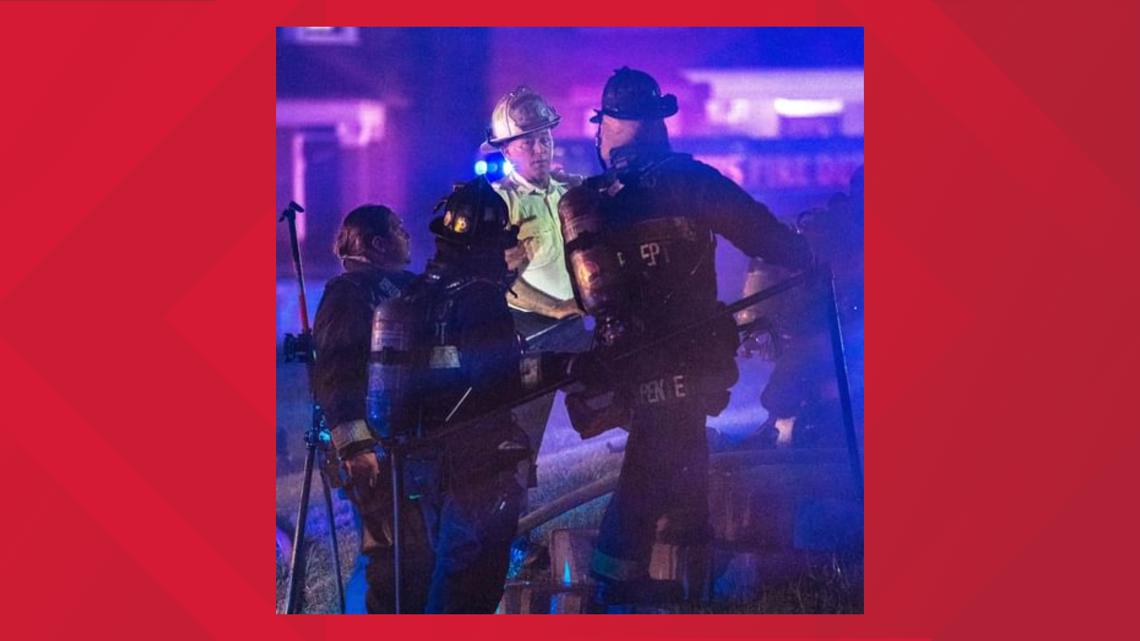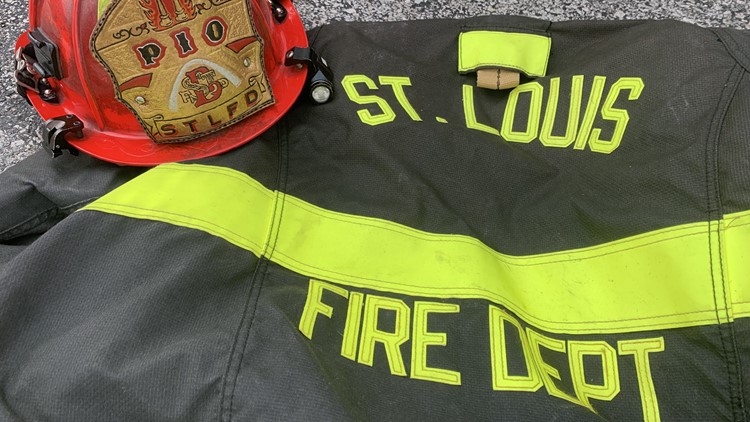ST. LOUIS — The gear meant to keep firefighters safe may slowly be killing them, according to a national firefighter union.
The fire-resistant tactical clothing, helmets and even breathing apparatuses that firefighters wear have become the latest battleground over PFAS, otherwise known as "forever chemicals," and the health dangers they pose. Researchers have found that numerous pieces of firefighter gear are made with the chemicals, which possibly contributes to firefighters having a 9% higher risk of being diagnosed with cancer and a 14% higher risk of dying from several types of cancer compared to the general population.
The battle has heated up and turned legal after the International Association of Fire Fighters filed a lawsuit against the National Fire Protection Association for "imposing a testing standard that effectively requires the use of PFAS in fire fighter protective gear," the union said on its website.
5 On Your Side asked St. Louis Fire Department Chief Dennis Jenkerson if he believes that PFAS is causing cancer for firefighters. He said, no but did affirm that "PFAS is a contributor to cancer."
The department reportedly made drastic changes in its approach to cleaning and replacing firefighter gear nearly six years ago when Jenkerson noticed the high number of people who were dying from very specific cancers.
"The department went through a period where several firefighters were diagnosed with consistent cancers," Jenkerson said. "There were specific brain cancers and specific blood cancers."
The data pushed Jenkerson and the department as a whole to launch their "Boots Off" campaign, which included sitting down with every single firefighter in the department to discuss the hazardous culture.Early detection is much better than it used to be since he asked providers to move the age of mandatory testing up for firefighters.


The culture was not easy to change. The era of fighting a fire and going to drink from a hose, with soot all over their mouth, was over. Jenkerson said firefighters used to sit down for dinner directly after a fire, and the chemicals were all over their hands and mouths. Gear used to only get cleaned when the firemen first received it, allowing layers upon layers of the chemicals to build up.
Even after the changes the St. Louis Fire Department has made, they say their gear still contains PFAS, it's just encapsulated.
"Each fireman has two sets of PPE and if they go to a fire with heavy contamination, that set of clothing comes back to the firehouse, it gets cleaned and dried, and they rotate the gear," Jenkerson said. "We really try to keep the cancer-causing products off their necks and off their skin."
The switch to encapsulated gear costs the fire department $2,500 per person for two new sets of gear. The department reportedly cycles gear out every six years or sooner depending on the condition.


When Jenkerson first started fighting fires, everything was made out of wood. However, the move to everyday products and building materials being made with synthetics may also be contributing to firefighters' high cancer rates.
"Everything is made out of synthetics now and a simple fire can be put out quickly, but the smoke hangs in the air," Jenkerson said.
"I couldn't wait to take my gear home as a new firefighter," said Capt. Garon Mosby with the St. Louis City Fire Department. "I remember taking my gear off as a new firefighter and putting it on my daughter because it was a cool thing to do. It was a badge of honor. After a lab wouldn't touch our gear without nitro gloves on, I went home and put that old gear in a plastic bag."
Over the past 5 years, St. Louis City has reportedly changed and eliminated the PFAS foams in the city.
"We looked at using PFAS-free foams and even they still have a little PFAS in them," Jenkerson said. "The problem with the foam is once you have heat around it, the heat degrades it very quickly. So the new foam isn't as effective as the old foams."
But as the national fight over the chemicals in firefighter gear continues, more changes may be on their way.



